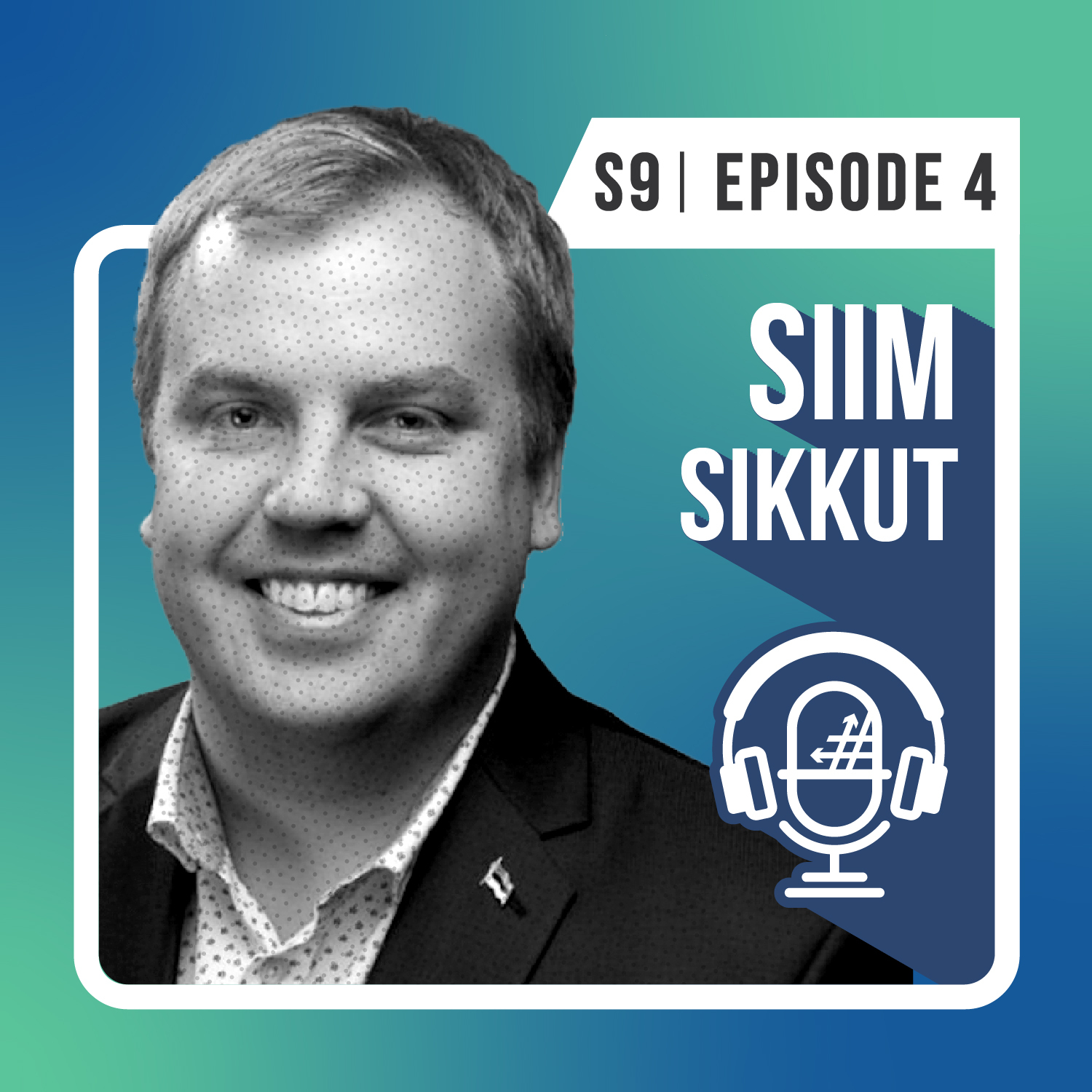S7 E2: Supporting Disaster Relief with Microsoft 365 at Team Rubicon

From natural disaster recovery to COVID-19 vaccination sites, there’s no shortage of work for Team Rubicon. But it takes more than just muscle. The organization relies on strong collaboration in Microsoft 365 to delegate tasks and complete important projects, and its strategies vary based on the job at hand.
I’m proud today to speak with Scott Martin, Senior Technology Manager at Team Rubicon, to learn how the organization has digitally evolved to do what it does best-serving people in need.
Let’s roll up our sleeves and get to work.
In this episode:
Scott’s journey
I have a non-standard journey to Team Rubicon. Most of our volunteers, staff, and volunteer leaders are veterans. That’s a big part of our identity. I’m a civilian and I was a theater major in college. I moved to Los Angeles to direct plays and start my own theater company. When I turned 30, I realized that I hadn’t really made the progress that I was hoping to in that career path. If I wanted to be financially stable, I would have to re-examine things.
And so, I was working at UCLA at the time, working in fundraising. I quit my job, went to a software development boot camp for about four months, came out the other side of that, started looking for work, then found a position here at Team Rubicon as a full stack developer.
Full credit to Raj, the CIO, for taking a chance on a theater major with four months of coding experience. After a year and a half, I got moved to a manager position of the development team. And then from there became the senior manager for the tech team. So, it’s been a wild journey, but it’s been really rewarding and a lot of fun.
Team Rubicon
Team Rubicon serves communities by mobilizing veterans to continue their service—leveraging their skills and experience to help people prepare, respond, and recover from disasters and humanitarian crises. That’s really what we’re about.
We’re human-focused. We’re here to try to make the world a better place and try to help people on their worst day or prepare for that worst day. And we do that primarily through the skills and experience of veterans.
Recruitment and dispatching process
We’re pretty big into recruiting and marketing ourselves to veterans, but anyone can join. We’re not veteran exclusive, we just happened to be made up largely of veterans. They sign up with us, they register, they go through online training and in-person training to improve their skills and get the skills for the capabilities that we try to deliver.
And then from there, when a disaster happens or if we identify something in a local community where we could help, we work with that community to identify a need to go and deploy an operation, and then we get volunteers who are already registered. We then find out their availability and then dispatch them to the operation.
Team Rubicon’s unique volunteer quality
Especially our veteran volunteers, they’ve gone through a great deal of training and many of them have lived through some really harrowing and high-stress situations that as a civilian, I have really no context for. And I think that’s what makes them really uniquely suited for disaster response that they can go into a town that’s been hit by a tornado or a city that’s been wrecked by a hurricane, and it doesn’t really faze them.
I think they feel the impact of it, but they see that as an opportunity to serve and an opportunity to help people. One of our core values is ‘Get shit done’. And I think that goes with a lot of our volunteers and especially the veterans. When there’s something that needs doing, they want to be the ones to do it. And I think that speaks to the core of what makes our volunteers suited for the work that we do.
The start of Team Rubicon’s digital transformation journey
In 2017, when hurricane Harvey hit, that really pushed our current systems to the limit, and to some extent, broke them. It came down to just pure human power and work ethic that we were able to be successful with our operation hard hustle in Houston.
That was, coincidentally, the same time that our CIO Raj joined the team. He was coming in with fresh eyes and saw the strain that our systems were putting on our volunteer leaders and our mobilization team to just get people in and get them out to where they can make an impact. And so that led to a digital transformation to really overhaul how we register people, how we do event management, how we do operations management, how we plan mobilization, all of that.
We spent months building out what we’re calling the enterprise management system, which is Dynamics 365 CRM that’s been customized to our needs. And we really try to be that agile organization, especially on the tech team, we have to be agile and be able to respond and adapt to what we thought would work for yesterday and make it work for what we’re trying to do tomorrow.
Providing better service with technology
Our volunteer leaders are really the backbone of what goes on the ground; the command and general staff who are running our operations and overseeing on the site. And so, we have to build our systems that are usable for them, something that’s usable often in low connectivity and something that is going to give them the information they need and empower them to do their job without actually creating more hurdles or anything like that.
And so, we try to deploy our analysts and our developers to the field as much as possible just to be there and hear what’s going on; know the pain points. And we have to be a very self-reflective team. We know we can always make it better. And we have to listen to the people who are using the tools to understand how we can do that.
Learnings through on-the-ground work
When I came on, one of the big pushes was to really try and standardize how certain jobs were done across the country. If you’re a volunteer leader with a comms focus, you should do your job the same way that someone does on the east coast, even if you’re on the west coast. And I think that’s still true, and that is still something that we’re pushing for.
But I remember a conversation with someone in Utah, she was a leader up in Washington, and she said, “My sawyer kit should be different than someone in Florida. I deal with fire mitigation, I deal with things that they don’t have to worry about. So, my tech kit or my sawyer kit should look different than what theirs should.” And that was a really impactful moment for me.
It might be something small or obvious, but I’ve realized something that I’ve carried with me since: that the core of the job and the tools we build should be the same in a way that it has to work on the big level, but they also have to be usable by anyone in a number of different situations. They have to really be flexible in that sense.
Teams adoption
The pandemic had such an impact on so many people and it’s been a really rough year, but I think this is one of those things that forced our hand in a way, and we said, “From a leadership perspective, everything we’re doing now for COVID-19—communication, the new org structure—they shifted things around and reprioritized people. And that was when we knew this was all going to Teams.
From using 80% Slack and 20% Teams, we went to 50-50 for a week. And then Teams kept going up and up and Slack kept going down and down. And then, as an IT team, we had to really get our stuff together and say, “Okay, we gotta get off Slack as quick as possible.” And that was its own challenge.
But I think the biggest frustration point really came when we straddled that line. And so, if I learned anything from it, it’s that change management is important. You can’t do anything too quickly. But in those situations, you just have to cut over, you just have to get out of one system and be in the other and that’ll reduce a thousand pain points just right there.
The Veterans’ Coalition
The Veterans’ Coalition is really an effort from Team Rubicon and our partners to get the communities up to that herd immunity level and help people alleviate the feelings of skepticism or distrust of the vaccine. A big part of it is just to say we’re all in this together; let’s take our shot, get us there. And the other big part of it is to really help push for diversity in the vaccine recipients. We really want to identify those underserved communities and the minority communities. We looked at mobile vaccine sites and mobile vaccine capabilities to try and go to them to cover that.
And really, what it comes down to is, we see the ability for veterans to serve and we want to help them get out there and support the people who are delivering the vaccine. Because if a doctor has to sit there and administer a vaccine to someone and then turn around and do a pile of paperwork, that’s many fewer vaccines they can do.
The VCV was also kind of an extension of something we had been talking about for a while, which was the idea of getting volunteers out to the field with us. Now we’re saying, “Okay, if you’re a veteran, if you work with one of our partners, just go through this portal, get out there, get involved.” You don’t need to become a gray shirt. You don’t have to commit to us. We just want to get you out there to the field.
How to make #ShiftHappen
From my first day on the job to literally two days ago, our CIO, Raj, says the same thing to me every time: “You have to understand the business. You have to understand the needs of the people who are going to be using the technology.”
It’s understanding the business and not just the strategy of it, not just the overarching vision or the mission, but like day to day, what are the pain points? What are people coming up against? And that comes down to the same thing that has made organizations successful or not over the last year: constant communication.
Internally and externally talking, listening, trying to really understand what people are going through, and making them feel like if they’ve voiced their concerns, that you’re going to hear it, take it in, and do what you can to make it happen. If you can’t, find a way to get to yes. If there are no other possible ways, then try to always articulate exactly why it’s not possible. That was maybe a roundabout way of really just saying you have to understand the business if you want to make technology successful for your company or your organization.
Today’s takeaway from Scott:
“We love all the tools. We love all the different things we can do, but if it doesn’t make someone’s day better or easier, that’s a miss on our part. So that’s really the constant reminder that we have to give ourselves, at least at Team Rubicon.”
Learn more about Team Rubicon: teamrubiconusa.org
Subscribe where you get your podcasts! Search for “#ShiftHappens” in your favorite podcast app.
With over 20 years of business and technology experience, Dux has driven organizational transformations worldwide with his ability to simplify complex ideas and deliver relevant solutions. He serves as the Chief Brand Officer of AvePoint who has authored the LinkedIn Learning course How to Build Your Personal Brand, the book SharePoint for Project Management, as well as numerous whitepapers and articles. As a public speaker, Dux has delivered engaging, interactive presentations to more than 25,000 people at leading industry events around the world. He also hosts the modern workplace podcast #shifthappens that focuses on how leading organizations navigated their business transformation journey. Dux advocates tirelessly for inclusion, using technology for good, and philanthropic initiatives. Connect with him: http://dux.sy



